McLaughlin, Michael J
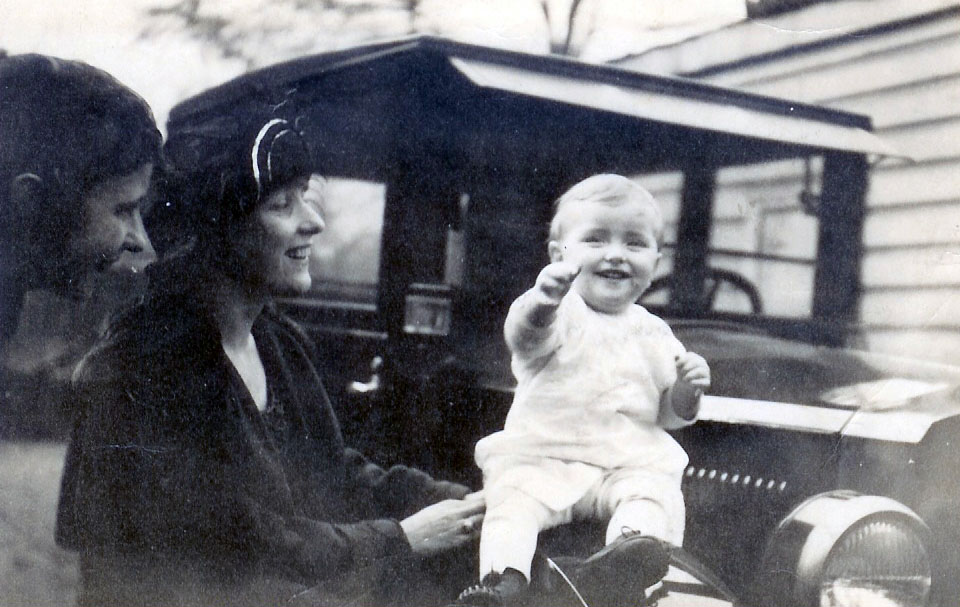 Michael James McLaughlin was born 13 Aug 1921 in Cleveland, Ohio to Michael Joseph McLaughlin and Margaret Mary Atckison. He was actually Michael James McLaughlin, Jr. on his birth certificate because my grandmother thought his father’s middle name was also James. It turned out that his father’s confirmation name (given in the Catholic service of Holy Communion) was James but his legal middle name was Joseph. My mother further complicated it by naming me a junior too on my birth certificate, and in other places as the third.
Michael James McLaughlin was born 13 Aug 1921 in Cleveland, Ohio to Michael Joseph McLaughlin and Margaret Mary Atckison. He was actually Michael James McLaughlin, Jr. on his birth certificate because my grandmother thought his father’s middle name was also James. It turned out that his father’s confirmation name (given in the Catholic service of Holy Communion) was James but his legal middle name was Joseph. My mother further complicated it by naming me a junior too on my birth certificate, and in other places as the third.
Both his parents dearly loved him. The photograph was taken in Minneapolis, Minnesota in early spring of 1922. Margaret’s brother John Ervin Atckison is on the left, Margaret is holding the baby, and Michael is on the hood of his parents’ car.
He spent his early years growing up in Cleveland, Ohio 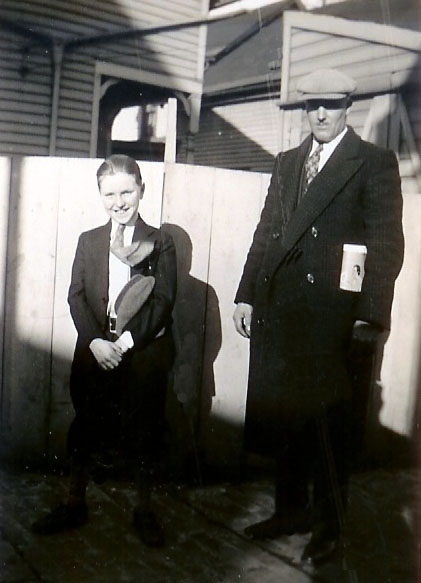 and New York, New York. He attended Saint Malachi’s Catholic School. He is rumored to have been rather a precocious child but fortunately for him a favorite on the nuns.
and New York, New York. He attended Saint Malachi’s Catholic School. He is rumored to have been rather a precocious child but fortunately for him a favorite on the nuns.
His only sister, Margaret, was born in October 1927. Shortly after Margaret’s birth, the family moved to New York, New York where my grandfather worked as a marble setter on Grand Central Station and various department stores. They lived in the borough of Queens. They’re also found there in the 1930 US Federal Census.
They returned to Cleveland, Ohio when Michael’s grandfather Anthony John died in September 1931. This picture at age 10 was taken that year at his grandfather’s funeral in October. The background is his grandfather’s home at 5815 Waverly Court, Cleveland, Ohio. His father’s uncle Michael McAndrews is standing to his right.
On their return to Cleveland, they stayed in my grandfather’s old home for some time. While there, my father and his sister attended Saint Colman’s Catholic School. My father graduated from Saint Colman’s in 1935. He attended a public high school but didn’t appear to fair too well. It appears that he dropped out of high school in 1937 and went to work as a cook.
He enlisted in the US Army on 3 May 1939 at Fort Hayes, Ohio. This was a neat trick since he was only 17 years old. He lied about his age, saying he was born a year earlier on 13 Aug 1920 in New York City. All military records use that incorrect date and place of birth. The Army sent him to Fort Benjamin Harrison, Indiana for basic training.
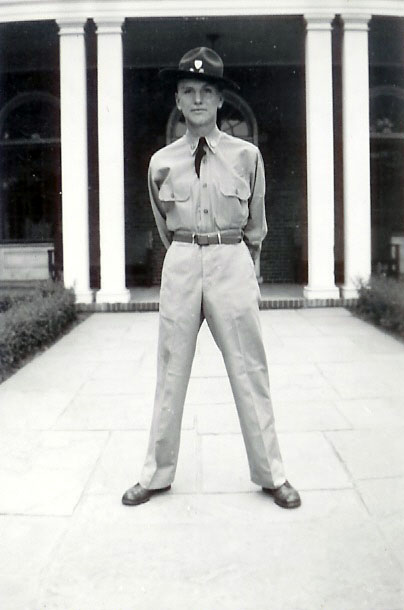 He would occasionally make mention of how the “brown boot” Army was tougher than the new Army. The “brown boot” Army was composed of all volunteers who enlisted before the country began preparing for war. The term captured their brown boots, which were standard issue prior to World War II. During the war, they changed to black boots. They remained black for several decades with the exception of jungle boots issued “in country” for the Vietnam War.
He would occasionally make mention of how the “brown boot” Army was tougher than the new Army. The “brown boot” Army was composed of all volunteers who enlisted before the country began preparing for war. The term captured their brown boots, which were standard issue prior to World War II. During the war, they changed to black boots. They remained black for several decades with the exception of jungle boots issued “in country” for the Vietnam War.
He felt that the training was more rigorous because his bivouac and march went from Fort Benjamin Harrison, Indiana to Fort Knox, Kentucky, and back again. Clearly, his march was over a hundred and fifty miles, and much more than I did on any of the three bivouacs during basic training at Fort Knox, Kentucky in the early 1970s. Maybe they were “tougher” but who would really know.
The picture above and on the left was taken after he completed Basic Training in 1939. After basic training, he was assigned to Company L of the 11th Infantry, which was part of the 5th Division at the time. As a member of the 11th Infantry, he participated in all three large manuevers before the beginning of the World War II. The first was the concentration maneuvers at Fort McClellon, Alabama during fall and winter of 1939-1940. The second was the IV Corps maneuvers at Fort Benning, Georgia in April 1940. The third was the 3rd Army manuevers at the Sabine River area of Louisianna.
At the conclusion of these training manuevers, he was transferred from the 11th Infantry to the 39th Infantry as training cadre for the 39th Infantry Regiment of the newly activated 9th Infantry Division. While with the 9th Infantry Division, he was stationed at Fort Bragg, North Carolina. There he was promoted to Corporal on 19 Aug 1940 and Sergeant on 10 Jan 1941. My father kept three large photos of the bivouac area at Fort Bragg but they’d disappeared by the time of his death. It seemed to have been a memorable time for him.
He transferred from the Infantry to the US Army Air Force in 1941. At that time, transfers meant you started all over as an enlisted man. So, he transferred as a private. He joined the 10th Air Depot Group, at Headquarters of the Air Service Command at Wright Field in Dayton, Ohio. His military specialty was as an Aircraft Inspector. He investigated crashes from what he said later in life.
His sister, Margaret Therese related in January 2010 that he was home on leave in Cleveland, Ohio on 7 Dec 1941. They all heard of the Japanese bombing of Pearl Harbor on the radio at the same time. She recounted that he said, “That’s it. Don’t expect me to be home until the war’s over.”
At Wright Field, he was promoted rapidly after the Japanese bombed Pearl Harbor. Promoted to Sergeant on 13 Jan 1942, Staff Sergeant on 1 Feb 1942, Technical Sergeant 1 Apr 1942 and Master Sergeant on 6 Apr 1942. All of these promotion certificates have “Temporary” stamped on them, which means they were war time promotions that you would lose after the war. He was assigned as the Sergeant Major. His WD/AGO 55 is an honorable discharge for the convenience of the service to accept an appointment as an active duty second lieutenant. It was issued on 24 Sep 1942 under Section X, AR 615-360.
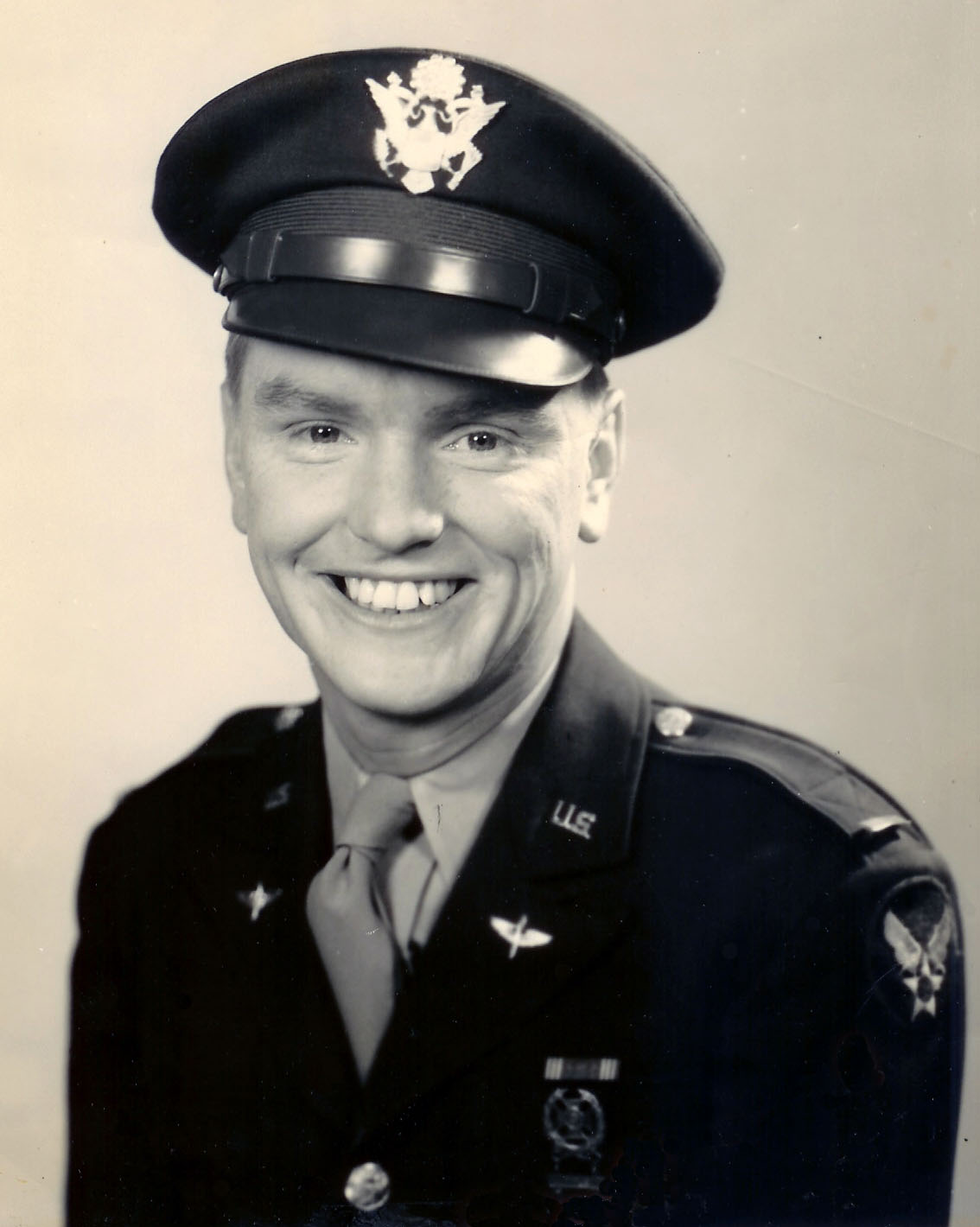 His WD/AGO 53 is intriguing because it lists a note of excellent character but lists three missed days of service. From what I’ve been able to find, these missed days represent, more often than not, an AWOL (Absent without Leave) incident. However, he’s wearing the Good Conduct Medal in the picture (at right) taken at the Army Air Base in Wendover, Utah. There seem two explanations for this. The three-day gap was excused for all but pay purposes because he was promoted to corporal the next month. In his case, the award of the Good Conduct Medal (GCM) can’t take advantage of paragraph 4-5(b) in AR 600-8-22 because his length of enlisted service was less than one year. Notably the Army Commendation Medal is missing from his WD/AGO 53 form, which means the order awarding the medal came after his commission, or he wore the medal in error. I’d suggest the former because he wouldn’t have risked wearing something he hadn’t earned. It was probably missed on his subsequent WD/AGO 53 when separating from the service as an officer. Perhaps they assumed the award was on the earlier enlisted separation.
His WD/AGO 53 is intriguing because it lists a note of excellent character but lists three missed days of service. From what I’ve been able to find, these missed days represent, more often than not, an AWOL (Absent without Leave) incident. However, he’s wearing the Good Conduct Medal in the picture (at right) taken at the Army Air Base in Wendover, Utah. There seem two explanations for this. The three-day gap was excused for all but pay purposes because he was promoted to corporal the next month. In his case, the award of the Good Conduct Medal (GCM) can’t take advantage of paragraph 4-5(b) in AR 600-8-22 because his length of enlisted service was less than one year. Notably the Army Commendation Medal is missing from his WD/AGO 53 form, which means the order awarding the medal came after his commission, or he wore the medal in error. I’d suggest the former because he wouldn’t have risked wearing something he hadn’t earned. It was probably missed on his subsequent WD/AGO 53 when separating from the service as an officer. Perhaps they assumed the award was on the earlier enlisted separation.
He attended Quarter Master Corps Officer Candidate School at Fort F.E. Warren outside of Cheyenne, Wyoming. He was commissioned a second lieutenant 25 Sep 1942. He said that he did some work for the military quarter master portion of the Manhattan Project, which may make sense since the 509th Composite Group was assigned to the Wendover Army Air Base. Though the timing of an assignment to the Aleutians doesn’t seem consistent with any sensitive role in the Manhattan Project. It appears that he returned from the Aleutians to an assignment at Kirkham Air Base, New Mexico that also dealt with the Manhattan Project.
An alternative possibility is that he may have been involved with the training command that was also on the Wendover Army Base. This may fit facts better since after the overseas assignment he was assigned to another B-17, B-24, and B-29 training base. Albeit, it was a base known to have direct involvement with the Manhattan Project. He was promoted to first lieutenant on 26 Apr 1943.
He also served overseas in the 11th Air Force as a Quarter Master Corps officer during World War II.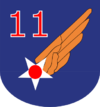 He was stationed in the Aleutians. In fact, this was his only overseas assignment during the the war. He was assigned to Amchitka at the Army Airfield from 25 Nov 1943 to 20 May 1944. He would recount the bombing missions launched from the island and the Japanese bombing attacks. In his 6 month tour, he developed an intense dislike for the island and hoped that atomic testing would obliterate its existence. He actually threw a huge block party during the last atomic test on Amchitka in the 1970s.
He was stationed in the Aleutians. In fact, this was his only overseas assignment during the the war. He was assigned to Amchitka at the Army Airfield from 25 Nov 1943 to 20 May 1944. He would recount the bombing missions launched from the island and the Japanese bombing attacks. In his 6 month tour, he developed an intense dislike for the island and hoped that atomic testing would obliterate its existence. He actually threw a huge block party during the last atomic test on Amchitka in the 1970s.
On his return to the United States he was assigned to Kirtland Army Air Base outside of Albequerque, New Mexico. From what he told me, his primary responsibilities involved transportation of supplies to Los Alamos National Lab in Los Alamos, New Mexico. He remained at that base until he was promoted to Captain on 14 Mar 1945. With the promotion he was transferred to the Headquarters of the 2nd Air Force in Colorado Springs, Colorado. He was separated as a Captain on 21 Feb 1946, and the 2nd Air Force was deactivated in March 1946.
While the military was downsizing, the civilian employment market didn’t look too terrific to my father. Especially, since he hadn’t completed high school. He said that he immediately re-enlisted as a Master Sergeant in the Army. He was assigned to the Hercules Army Depot in Hercules, California where he was able to complete his GED Certificate through Fremont High School. The Army recalled him as a Captain on 18 Jun 1946 and they assigned him to the Texarkana Arsenal in Texarkana, Texas. He was then transferred to the Sierra Ordnance Depot in Herlong, California. He was voluntarily separated from the Army on 4 Jan 1947, which was the day his promotion to Captain became permanent.
The military once promoted to brevet (temporary) grades during wartime. This meant your status reverted to the lower permanent rank at the convenience of the military, typically after the war. Dad entered the Army Reserves as a Captain.
He was recalled from his reserve unit to active duty on 16 Nov 1948 as a result of the Berlin Blockade and Airlift. While he began his commissioned service in the Quarter Master Corps they sent him to basic officer training in the Transportation Corps from Mar 1949 to May 1949. In July 1949, he was assigned to Port Operations for Bremerhaven, Germany. He became part of the American occupation forces. He very much enjoyed his year in Germany. While stationed there he went to Paris and the top of the Eiffle Tower in Paris, France.
My dad loved golf. He loved it so much that he’d wake me up at 5 A.M. when I was in elementary school to play golf. That’s probably why I’m ambivalent toward the game.
Perhaps his crowning achievement in golf was winning the first flight of the Bremerhaven, Germany Port tournament on 28 May 1950. The US Army Photograph shows Sergeant Sidney J. Domingue, Captain Michael J. McLaughlin, and Mr. T.S. Buchanan from left to right. On the back of the photo is typed a brief press clipping about the tournament.
Since my father did not have a college degree, promotion opportunities didn’t exist. He left active duty and entered the reserves to pursue a bachelor and master degree. He graduated with is B.A. in Accounting in 1953, Cum Laude; and an M.B.A. in 1954. In between his bachelor and master degree, he attended the Logistical Command Refresher Course at Command and General Staff College in Fort Leavenworth, Kansas as a reserve officer from 8 Jun 1953 to 20 Jun 1953.
After graduation, he returned to active duty at Fort Eustis, Virginia as a Transportation Corps officer. From what he said to me, he was awarded the Army Commendation Medal during this time frame for meritorious service. While it would be an award consistent with what he was doing at Transportation Corps headquarters, there are no available records in the set given me. A fire in 1973 destroyed 80% of Army records for those separated before 1961, and apparently his were unfortunately in that set. The lasting feature of Fort Eustis, Virginia is that he met my mother that fall, and with the completed degrees was promoted to Major on 1 Dec 1954.
Three bars of service medals sum up my father’s 24 years of active and reserve duty. The awards and decorations are qualified below from top to bottom and left to right by row. They are listed to the best of my knowledge with the supporting documents available:
- Army Commendation Medal – He verbally told me that he received this for meritorious service while on active duty during 1954 to 1955. It appears that such an award for meritorious service is consistent with exemplary service of a Major, at least according to information about the decoration during that time period. No other information supports this award. It is listed as an award for fear of wrongfully omitting it.
- Army Good Conduct Medal – Awarded for three years of enlisted service prior to his commission in 1942. He’s wearing this sole decoration in his US Army Air Force photo taken in 1943. No mention of the Award is on his enlisted WD/AGO Form 52, dated 24 Sep 1942.
- American Defense Service Medal – Awarded on his WD/AGO Form 53, dated 21 Feb 1946.
- Asiatic-Pacific Service Medal – Awarded on his WD/AGO Form 53, dated 21 Feb 1946.
- American Campaign Medal – Awarded as the American Theater Ribbon on his WD/AGO Form 53, dated 21 Feb 1946.
- World War II Victory Medal – Awarded on his WD/AGO Form 53, dated 21 Feb 1946.
- World War II Army of Occupation Medal (Germany) – Awarded on his DD214, dated 15 Jun 1950.
- National Defense Service Medal – Appears appropriate because a photocopy of his graduation from Command and General Staff College’s Logistical Command Refresher Course is dated from 8 Jun 1953 to 20 Jun 1953, which places him on active duty during the Korean War.
- Armed Forces Reserve Medal – Appears appropriate because of his active duty service from 1953 to 1955. His graduation from Command and General Staff College’s Logistical Command Refresher Course is dated from 8 Jun 1953 to 20 Jun 1953, places him on active duty from the U.S. Army Reserves. There are unfortunately no reserve service records or DD-214 in our possession to confirm it. I recall his wearing it on his uniform in the early 1960s with the bronze hourglass clasp because the clasp caught my eye as a little boy.
They were married in Minden, Nevada in 1955. My mother and he decided to start a family and pursue non-military career objectives. My father resigned from active duty for the last time in June of 1955. He attended the Internal Revenue Agent’s Basic Training Program in San Francisco, California from June to August 1955. He joined the IRS in 1955. He continued serving in the Army Reserves until 1963.
After completing his tax training, he needed to wait for an official start date in the spring of 1956. In the meantime, he took a position as the day manager of the Mapes Hotel and Casino in Reno, Nevada. I was born there while he was managing the Mapes Hotel and Casino. The photograph to the right shows my father feeding me with a bottle in 1955. That house is no longer standing because it was torn down to make room for the interstate highway (I-80), which bisects Reno.
My father worked for the IRS for a number of years, building on his federal retirement. They purchased a house in Hayward, California. It had three bedrooms and two baths. My sister Michele was born in 1957, and then they were expecting a third child. The picture below was taken in the Hayward, California home during my sister Michele’s second birthday party, and shortly before the birth of my sister Lisa in 1959.
He left the IRS to become an Assessor for Alameda County. He did it to increase his salary and enable them to purchase a new home in Fremont, California. They kept the home in Hayward so that my grandparents could live there rent free.
My grandfather suffered the last few years of his life with a debilitating decease. They thought it was Lupus Erythematosus but later they weren’t sure. He appeared to have contracted it in the Pacific Islands while serving with the 39th Construction Brigade in the Navy as a Seebee. After my grandfather, Michael Joseph McLaughlin, died in 1965, my grandmother moved to an apartment in Oakland, California (owned by her sister Bertha Nelson). Then, my parents sold the Hayward, California home.
My sisters and I grew up in the Fremont, California home. It was located in the Mission Ranch subdivision on Apricot Lane. The photograph to the left was taken in front of that home Easter Sunday in 1963. It was quite a production to orchestrate the photo. My father set up his tripod, focused it and then had my grandfather click the image. It was a Rolleicord twin lens reflex camera that my father bought in Germany in 1950. All that posing made us fidgety (at least it made me fidgety), and right before Sunday morning Mass too. It’s amazing we have the photograph because we clearly raised my dad’s blood pressure that morning.
Michele and I helped (watched more or less) my father plant the palm trees when we moved into the house in July 1960. The palm trees grew to about 35 feet in height while my father lived there. He loved those palm trees. Fortunately, he didn’t live to see them removed in the late 1990s.
My mother passed away on 23 Jan 1983. My father lived in the home another four years but sold it 1988 after 28 years of continuous occupancy.
In 1984, I finally went to Ireland to visit my family outside of Belmullet, County Mayo, Ireland. It was a terrific trip. One that in theory I would make as an adult with my dad. After my mother’s death he seemed disinterested in doing anything, so I went alone without telling him. When I got back he was upset.
He asked me to take an unpaid leave and he would pay for my aunt Margaret, himself and me to go that fall. We actually made the trip in September. I don’t quite remember my father being quite that happy in his whole life. He hadn’t seen his cousin Gerald before from what I understand.
We all posed in front of the old, and once thatched, cottage where my great grandfather was born in 1853. It’s now used as a barn. Thatch is only for rich folks who want to recreate history in Ireland now, or the government to garner tourist dollars.
Gerald and Mary built their home in the 1960s. They had a happy and well connected family, but many of their children moved to England or continental Europe for work opportunities. The following photo is of my dad, his sister Margaret, and me in front of the old McLoughlin house in Foxpoint, which is north east of Belmullet, Ireland.
At our parting with the cousins, he and Gerald hugged and said goodbye. Both cried. I thought they felt they wouldn’t see each other in this life. I asked my dad as we drove away and he said that’s why he cried. My aunt started crying as she heard that.
My dad initially retired to Suisun City, California while working part time. He took the photograph at the right during Thanksgiving Day 1992. He was visiting my sister Michele’s home in Livermore, California for Thanksgiving Dinner. 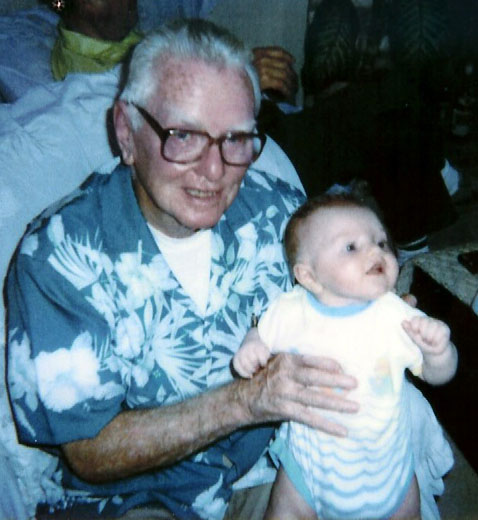 The baby on his knee is his grandson Joseph Michael McLaughlin. My dad had offered $10,000 to us if we’d name him Michael James McLaughlin, IV. We declined the offer because we felt Joseph should have a name to himself. We kept Michael as a middle name because both my wife and I found an interesting argument for it in a novel written by John Dennis Fitzgerald’s. It was in his first book, which is titled “Pappa Married a Mormon”. In the book, all the boys had equal claim on daddy’s name as a middle name. This is true for our four sons.
The baby on his knee is his grandson Joseph Michael McLaughlin. My dad had offered $10,000 to us if we’d name him Michael James McLaughlin, IV. We declined the offer because we felt Joseph should have a name to himself. We kept Michael as a middle name because both my wife and I found an interesting argument for it in a novel written by John Dennis Fitzgerald’s. It was in his first book, which is titled “Pappa Married a Mormon”. In the book, all the boys had equal claim on daddy’s name as a middle name. This is true for our four sons.
Here’s better photo of my father with Joseph during the fall of 1991, which was taken in our living room in Livermore, California.
When he gave up his part time employment, he moved to Ajo, Arizona in 1992. He died of complications from an auto accident and heart failure 4 May 1993 at the Veterans Hospital in Tucson, Arizona. Consistent with his wishes, he was buried 10 May 1993 in the National Cemetery Memorial Cemetery of Arizona in Phoenix, Arizona. He wanted to be buried with the men with whom he served. My mother is buried separately in Fremont, California under the same tree as her best friend, who was killed by a drunk driver in 1963.
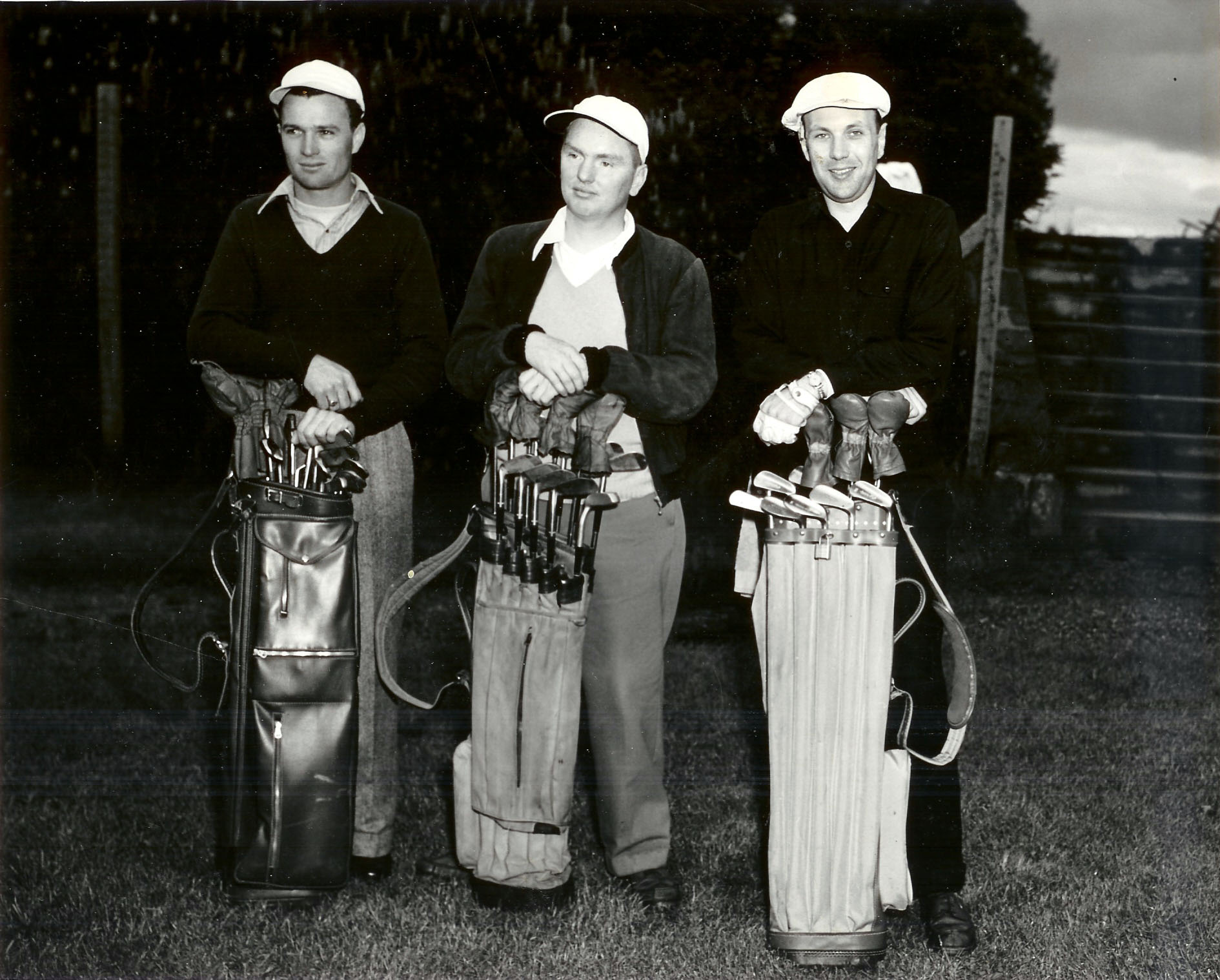

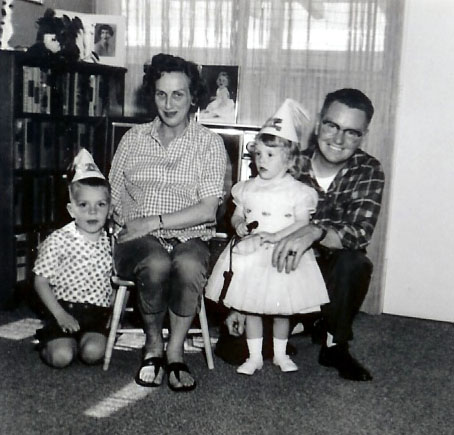
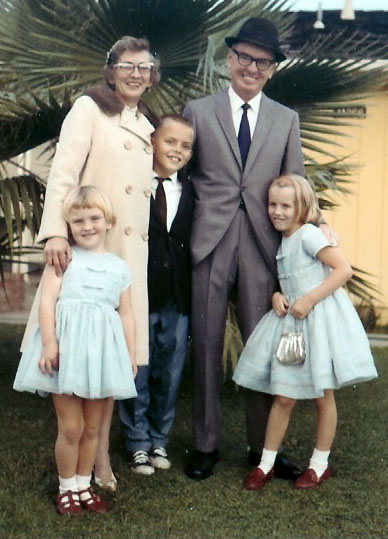
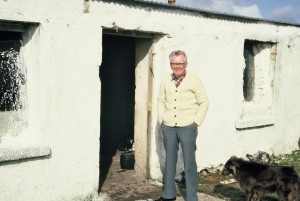
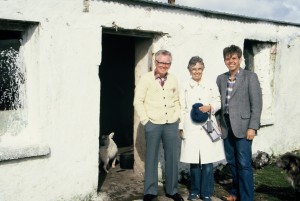
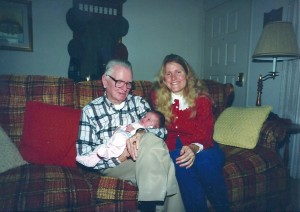
[…] McLaughlin, Michael J […]